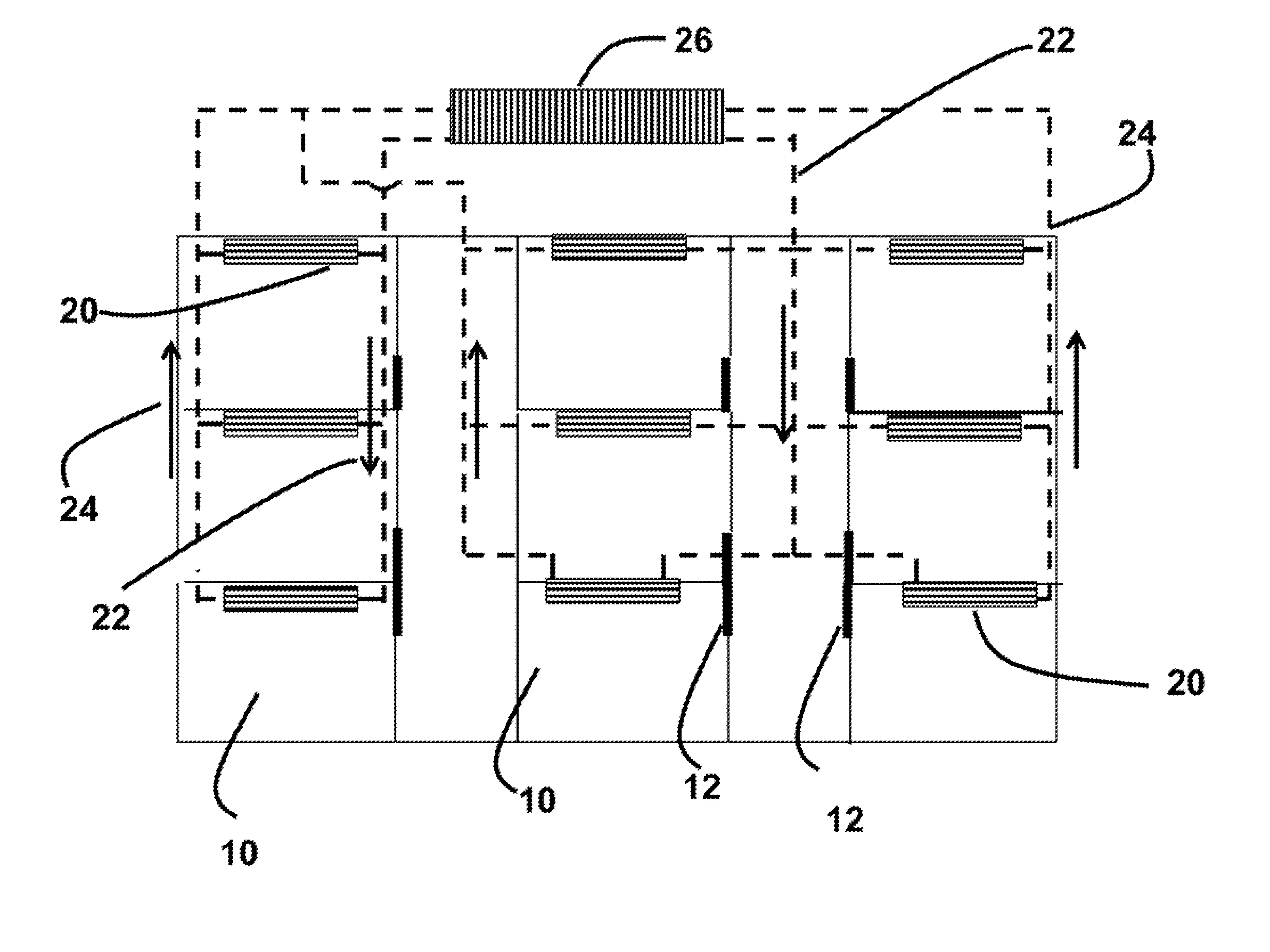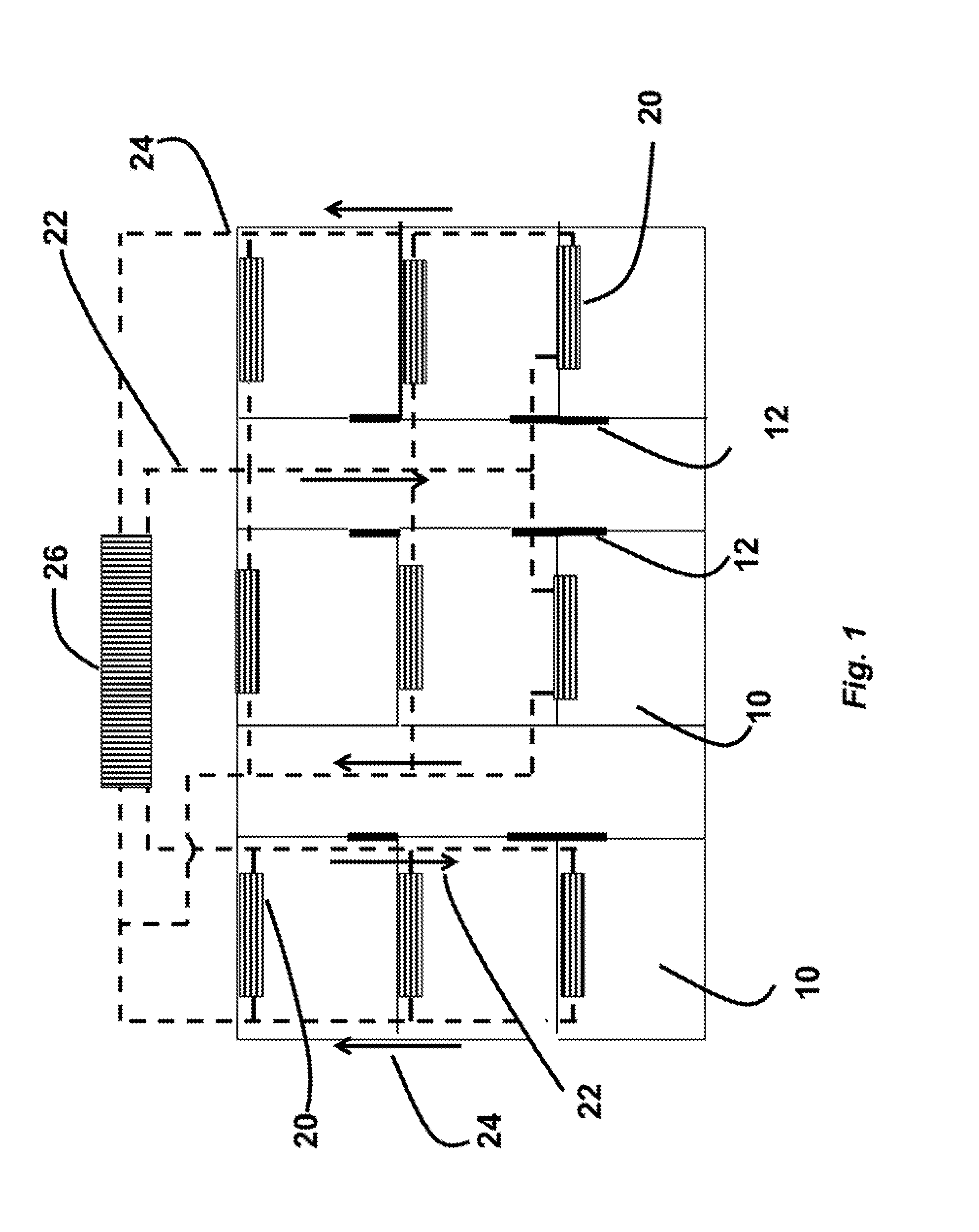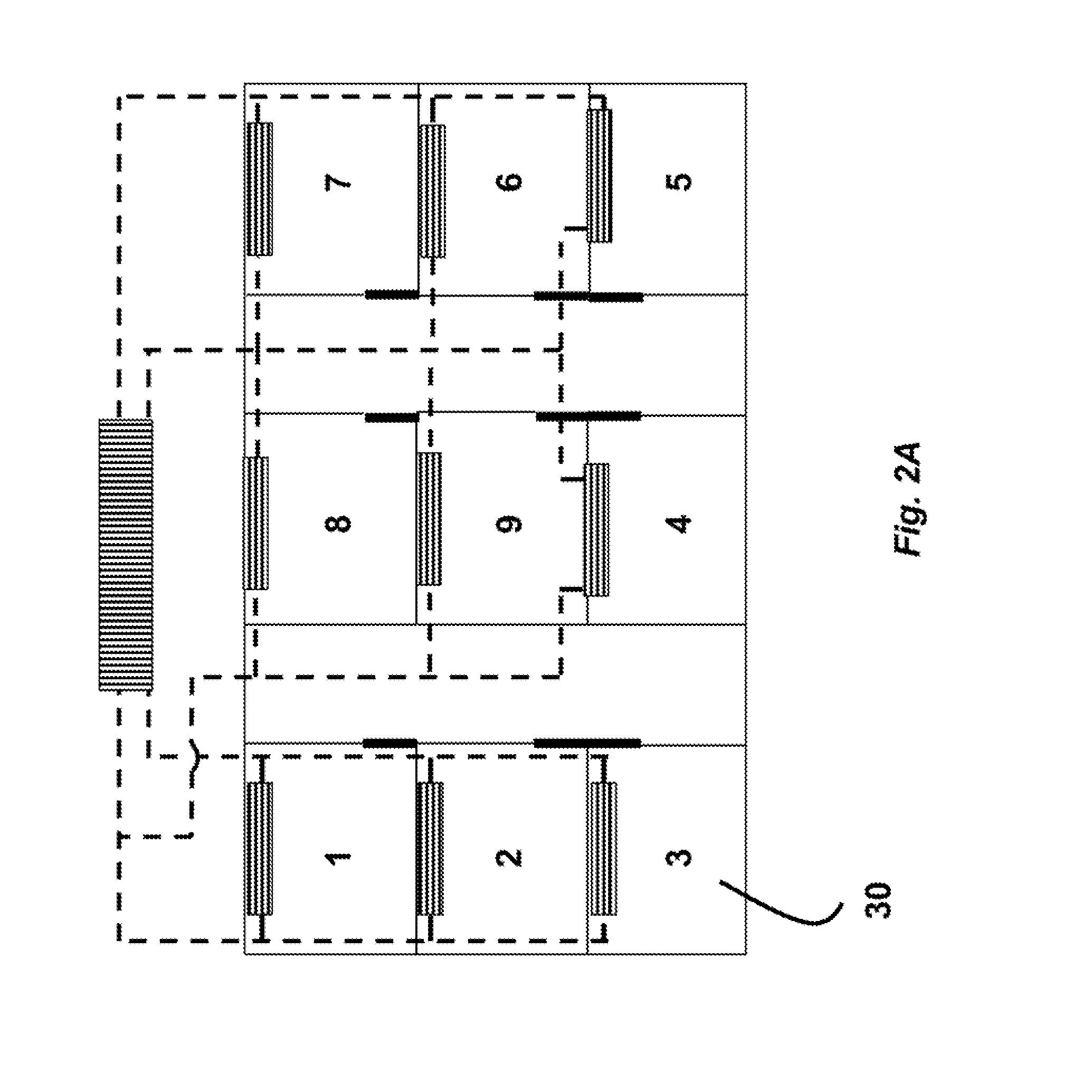Method for Optimizing HVAC Systems in Buildings Using Nonlinear Programming to Maximize Comfort for Occupants
a technology of hvac systems and nonlinear programming, applied in the direction of lighting and heating apparatus, heating types, instruments, etc., can solve problems such as non-smooth behavior, and achieve the effects of optimizing the operation of hvac systems, maximizing occupant comfort, and minimizing energy consumption
- Summary
- Abstract
- Description
- Claims
- Application Information
AI Technical Summary
Benefits of technology
Problems solved by technology
Method used
Image
Examples
Embodiment Construction
[0015]Building Representation
[0016]FIG. 1 shows a floor plan for a building that can be used by embodiments of our invention. The building includes rooms 10 and doors 12. Each room is equipped with an indoor air conditioning unit 20. The indoor units are connected to an outdoor unit 26. A refrigerant is used for cooling or heating room air flows 22 to the indoor units from the outdoor unit. The refrigerant flows (dashed lines) 24 from the indoor unit to the outdoor unit where the heat is dissipated and the refrigerant is recycled back to the indoor unit 22.
[0017]FIG. 2A shows a numbering of nine rooms 30 in the building, i.e., 1 to 9. The graph network representation in FIG. 2B based on this numbering. Nodes 40 represent the rooms in the building, and edges 42 represent the rooms that share a wall.
[0018]FIG. 3A provides a resistive capacitive network representation of the building model for thermal and humidity dynamics. The variables used in this figure and other similar figures ar...
PUM
 Login to View More
Login to View More Abstract
Description
Claims
Application Information
 Login to View More
Login to View More - R&D
- Intellectual Property
- Life Sciences
- Materials
- Tech Scout
- Unparalleled Data Quality
- Higher Quality Content
- 60% Fewer Hallucinations
Browse by: Latest US Patents, China's latest patents, Technical Efficacy Thesaurus, Application Domain, Technology Topic, Popular Technical Reports.
© 2025 PatSnap. All rights reserved.Legal|Privacy policy|Modern Slavery Act Transparency Statement|Sitemap|About US| Contact US: help@patsnap.com



